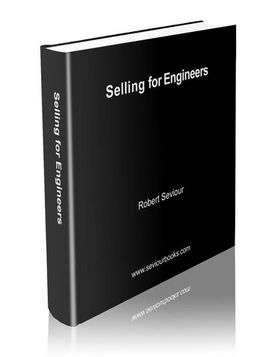Articles on Selling by Robert Seviour
Two Words to Discover Your Client's Buying Motives
Two words work significantly better than the ones you usually find listed in sales-training books. Typically what you will see are all the 'w' words – that is, 'what', 'which', 'where', 'who' and 'why'. But only two of those are really good and one of them is dangerous if you aren't careful.
What
'What' is excellent. Here are some typical questions you can use it to begin:
What do you want to do with (this item, equipment etc.)?What are your priorities?
What matters to you most?
What time-scale do you have?
What do you like about . . .?
'Which' and 'Where' got a free ride along with the more powerful words, these two are of use but not outstanding.
'Why' has to be used with discretion. Anything more than two or three 'why s' in an interview comes across as rather aggressive, that is the last thing that a sales-interview should be. (Leave that to Jeremy Paxman and other political journalists).
But a powerful use of 'why' is a one-off shot in response to a customer saying, 'I don't like . . . '(some feature or another model etc.). Just ask, 'Why?'
'Who' has a natural application for discovering the decision maker(s) involved in buying within the prospect's company. You can ask, 'Who else would be involved in the decision?'
How
I've left the other great one to last; 'How', a word that works very well together with 'What'.
An example:
'What do you want to do with this equipment?'
(After the customer replies you can continue;)
'How did you handle this issue before?'
'What happened?'
'How did you deal with that?'
What do you see as the main problem?
'How are you planning to tackle it in the future?'
And so on.
'What' and 'How' give you an almost instant sales interview and find out the buyer's motivations in an effective, un-pressured way. They have a happy relationship with one another. I suggest you get acquainted.
Once you have a clear idea of a prospect's reasons for being interested, it is easy to construct a convincing presentation. If you don't know these reasons, you have the far less satisfactory alternative of using a 'scatter gun' approach in the hope that something you cover will be of interest. This is ineffective because you dilute the prospect's interest by talking about irrelevant aspects of your product.
So use 'What' and 'How' to find out what really matters to your prospective customer - and get the sale.
If you enjoyed this article, take a look at my book.
About the Selling for Engineers Manual
More articles on better selling
Questions/comments - drop me a line at
![]()
